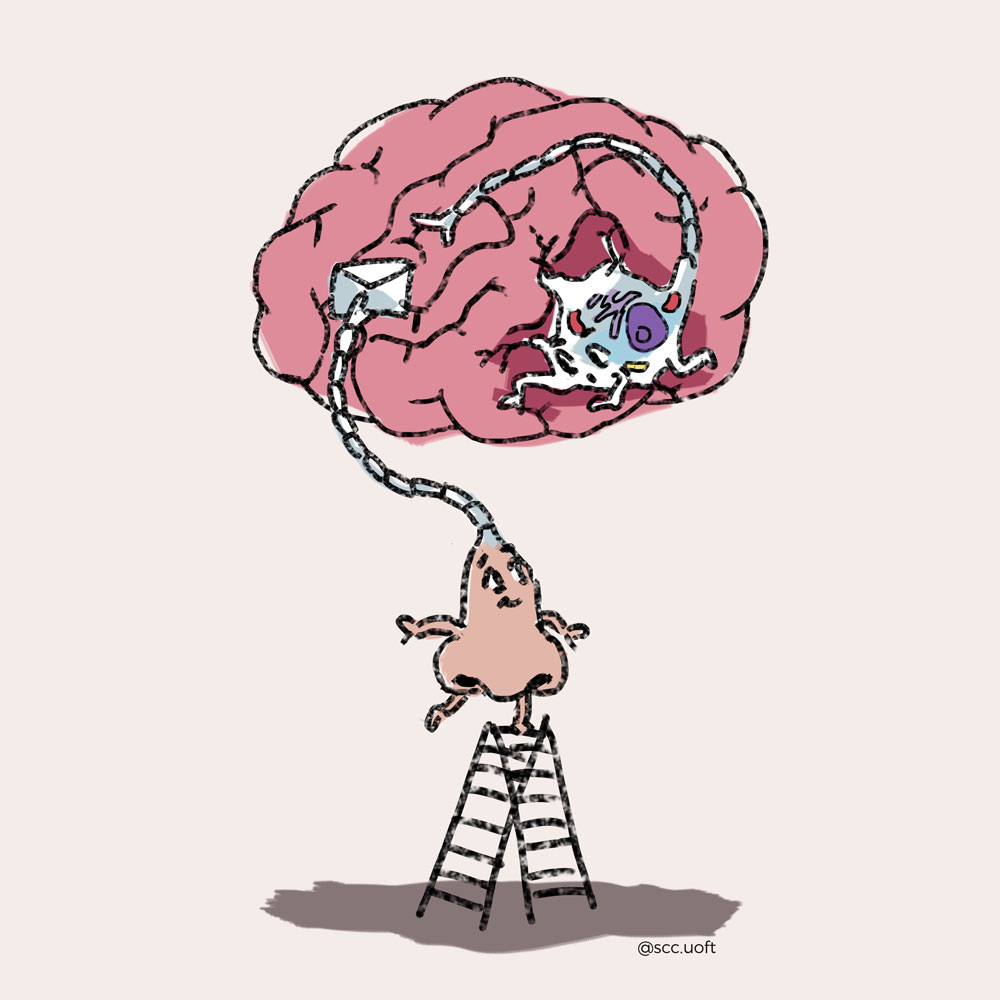
Written by Hasan Galib
Illustrated by Amy Jiao
Have you ever wondered why certain smells can bring back vivid memories? Afif Aqrabawi, a PhD candidate in the department of cell and systems biology at U of T has discovered a novel pathway that might explain the link between smell and memory.
In general, smells are sensed when odorants bind to specific chemical receptors in the nose, which are then transmitted as neural signals to a part of the brain called the olfactory bulb, where they are further processed in the olfactory cortex.
A relatively unknown part of the brain called the anterior olfactory nucleus (AON) is thought to play a pivotal role in this process. While investigating the AON, researchers discovered a bundle of neurons connecting the AON to the hippocampus, a region associated with the formation of spatiotemporal memory.
Interestingly, Alzheimer’s patients have been seen to exhibit difficulty recognizing odors. As a result, smell tests are commonly used to diagnose early onset Alzheimer’s, however the basis for the loss of olfactory memory had remained unknown till now.
To experimentally determine the function of this nerve connection, they created lesions on it in mouse brains and subjected them to a series of odor memory tests. Normally, mice prefer to spend more time smelling new odors than those they are familiar with. However, when the pathway is disconnected, the mice would spend more time sniffing previously smelled odors, suggesting an odor memory problem.
These new findings offer us a better understanding of the brain and an opportunity for better and earlier diagnostic tests for Alzheimer’s disease.
Sources:
- Aqrabawi, A. J., & Kim, J. C. (2018). Hippocampal projections to the anterior olfactory nucleus differentially convey spatiotemporal information during episodic odour memory. Nature Communications, 9(1). doi:10.1038/s41467-018-05131-6